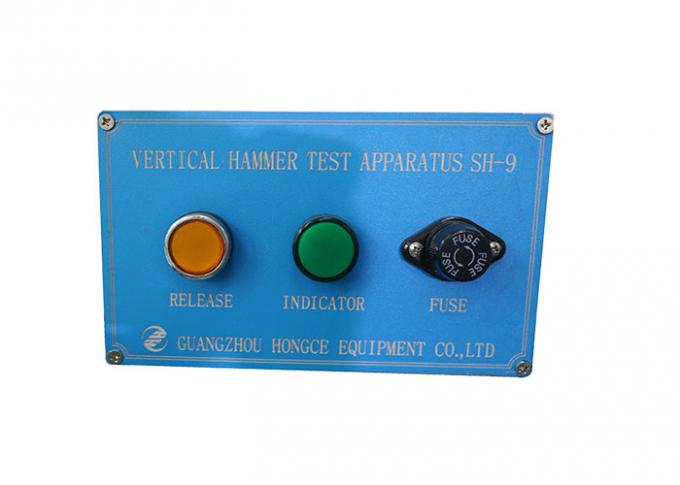230V Vertical Hammer 5J Mechanical Strength Test Device
Product Introduction
This vertical impact test apparatus is designed and manufactured according to the standard requirement of IEC60068-2-75 Test Ehc..
It is used to test the enclosure mechanical strength of the household and similar electrical appliances. Equipped with standard 5J impact hammer.
Technical Parameters
| Model | SH-9 |
| Power supply | 230V, 50Hz |
| Release mode | Electromagnet release |
| Drop floor | Nylon base 600mm*600mm; thickness 8mm; hardness HRR85-100. |
| Drop height | 0-1000mm |
| Impact hammer | 5J, stainless steel |
| Impact height | 300mm |
| Installation mode | The hammers are by electromagnet, the conduits are by screw-in. |
| Standards | IEC 60068-2-75 |
Operation Steps
1. Access to external 230V, 50Hz power supply.
2. Loosen the fixing screw on the support arm, move the support arm up and down, to move the support arm to the position where the conduit can be placed.
3. Loosen the fixing screw on the electromagnetic plate, move the electromagnetic plate forward and backward to make the position of the electromagnet above the sample.
4. Place the hammer at the end of the electromagnetic plate, press [RELEASE], and the yellow light is on. Then the hammer will be sucked on the electromagnetic plate.
5. Install the conduit, and place the test sample under the conduit, then adjust the height of conduit by removing the support arm up or down, to make the bottom of the conduit touch the surface of the test sample.
6. Press [RELEASE] again, the hammer will be released automatically along the conduit and impact on the test sample.
Note: When do the impact test next time, you need to rise the lifting device, remove the impact hammer, then unscrew the conduit, re-install the hammer, and then screw-in the conduit, repeat the above steps to do the impact test. By horizontal adjust the bolt and move the distance forward and backward of the conduit or re-install the sample when the sample is impacted at different points.



